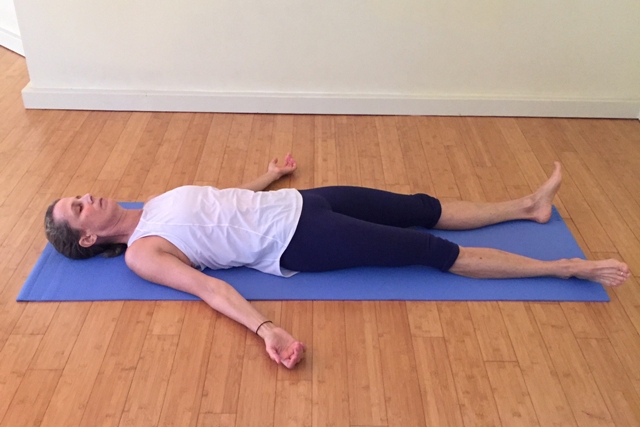These seven spiritual life-lessons direct us toward greater consciousness. If we ignore our responsibility and need to address consciously these seven spiritual lessons, however, their energy can manifest in illness. Many spiritual Eastern traditions understand illness to be a depletion of one’s internal power or spirit. The congruencies among major spiritual traditions underscore the universal human experience of the connection between the spirit and body, illness and healing.
Each of the seven levels of power in our biological system contains a single sacred truth. This truth continually pulsates within us, directing us to live according to the right use of its power. We are born with an inherent knowledge of these seven truths woven into our energy system. Violating these truths weakens both our spirit and our physical body, while honoring them enhances the strength of our spirit and our physical body.
Energy is power and our bodies require energy; therefore, our bodies require power. When we work with the chakras we are interacting with power and gradually we take control of our own power in successively more intense processes. At the level of the first chakra, we learn to handle having a group identity and the power that comes within the family; at later levels we individualize and mange power as adults. Gradually we learn to manage our minds, our thoughts and our spirits. Every choice we make, motivated by either faith or fear, directs our spirit. If a person’s spirit is impelled by fear, then fear returns to her energy field and to her body. If she directs her spirit in faith, however, then grace returns to her energy system and her biological system thrives.
The major spiritual traditions hold that releasing one’s spirit into the physical world through fear or negativity is a faithless act of choosing personal will over the will of the heavens. In Eastern spiritual terms, every action creates karma. Acts of awareness create good karma; acts of fear or negativity create bad karma, in which case one must “retrieve” one’s spirit from negative places in order to enter heaven “complete”.
We are simultaneously matter and spirit. In order to understand ourselves and be healthy in both body and spirit, we have to understand how matter and spirit interact, what draws the spirit of life force out of our bodies, and how we can retrieve our spirits from the false gods of fear, anger and attachments to the past. Every attachment we hold on to out of fear commands a circuit of our spirit to leave our energy field. What drains your spirit drains your body. What fuels your spirit fuels your body. The power that fuels our bodies, minds and hearts does not originate in our DNA. Rather, it has roots in divinity itself.
Three truths that are common to the major spiritual traditions are:
Misdirecting the power of one’s spirit will generate consequences in one’s body and life.
Every human being will encounter a series of challenges that test his allegiance to heave. These tests will come in the form of the disintegration of one’s physical power base: the inevitable loss of wealth, family, health or worldly power. This loss will activate a crisis of faith, forcing one to ask, “What is it, or who is it that I have faith in?”
To heal from the misdirection of one’s spirit, one has to be willing to act to release the past, cleanse one’s spirit and return to the present moment.
In the major spiritual traditions, the physical world serves the learning of our spirits, and the “tests’ we encounter there follow a well ordained pattern. In the chakra system, each energy center warehouses a particular power. These powers ascend from the densest physical power to the most etheric or spiritual power. Remarkably, the challenges we face in our lives tend to follow this alignment as well.
The Lessons of the First Chakra
The lessons of the first chakra are related to the material world. The first chakra is also called your tribal chakra. The sacred truth at this level is All is One. We are interconnected with all of life and to one another. The tribal chakra resonates to our need to honor familial bonds and to have a code of honor within ourselves. We first encounter this truth within our biological family, learning to respect the bonds of blood. This connection can spread to others who are like you as members of a church, temple or synagogue. However, your bond to your biological family is symbolic to everyone and to all that is life. As Thich Nhat Hanh says we “inter-are”. Violating this energy bond by considering those wqho are different than us to be less than us creates a conflict within our spirit and therefore within our physical body. Accepting and acting according to the basic truth All is One is a universal spiritual challenge.
The First Chakra
Location: Base of the spine at the coccyx.
Organs: Spinal column and physical body support, legs, bones, feet, rectum and immune system
Emotional and mental issues: Emotional and mental health, physical family, group safety and security, ability to provide for life’s necessities, ability to stand up for one’s self, feeling at home, social and familial law and order.
Physical dysfunctions: Chronic lower back pain, sciatica, varicose veins, rectal tumors/cancer, depression, immune related disorders.
Questions to ask yourself in regard to the health of the first chakra:
What beliefs and values do you share with your family?
What beliefs and values do you not share with your family?
What beliefs and values, when shared with your family, create anger, guilt, anxiety, or depression?
What beliefs and values, when shared with your family, create joy and acceptance?
Identify and list any superstitions that you hold.
Which of these superstitions create fear?
Which of these superstitions create pleasure?
Can you define your personal code of honor?
List situations where you did not live up to your code of honor.
List situations where you have resolved the issues listed in the previous question.
List unfinished business (anger, guilt, anxiety, depression) with:
Your mother
Your father
One or more of your siblings
Other family members
What are you willing to do to heal any of these relationships?
List all the blessings you received from:
Your mother
Your father
One or more of your siblings
Other family members
What are the major values you would wish to instill in your children if you had/have any?
What tribal rituals/traditions do you wish to honor and continue?
List tribal values you wish or need to strengthen.
On a scale of 0 to 10—in which 10 means absolute health with no deficit whatsoever and no lack of full expression of this chakra—how healthy and how well-balanced is your first chakra?














